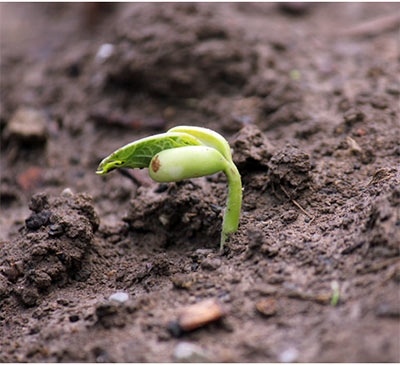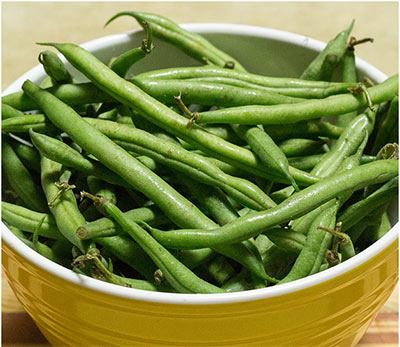 Who doesn’t know about beans? Beans, without doubt, fill into that category of meals that have been keeping our dining tables company for centuries, being an eternal meal of man. Beans have an offspring of (can be cooked into) several delicious recipes that we can’t have enough of. Moving aside the culinary delight of beans and diverting to the agricultural dimension, planting beans is good business.
Who doesn’t know about beans? Beans, without doubt, fill into that category of meals that have been keeping our dining tables company for centuries, being an eternal meal of man. Beans have an offspring of (can be cooked into) several delicious recipes that we can’t have enough of. Moving aside the culinary delight of beans and diverting to the agricultural dimension, planting beans is good business.
When it comes to planting beans, it is as enjoyable and spontaneous without the avid labors customarily associated with farming. For one thing, beans don’t take much to grow and can grow healthily even without the close supervision of the farmer.
Therefore it is safe to say beans is not among those “spoilt” crops that you have to pet every time with attention. No, with little care, beans would sprout healthily multiplying to several pods. From the agricultural view of things, planting beans even increase the fertility of soil you are planting it as the beans would add more nitrogen to the soil.
For a crop as global as beans, it is understandable that there is an expansive variety of beans when it comes to planting. And really beans come with a diverse spectrum of different kinds and groups. These different varieties come with their distinctive favored planting conditions. A closer understanding of the type of the beans would help better in its planting and consequent nurturing.
In a basic situation with natural conditions, beans shouldn’t take more than 2 weeks to germinate. Ideally, a week (at the maximum) is enough for your beans to start sprouting eagerly from the ground. But these 7 days is not necessarily definitive for all types of bean varieties. More precisely, within 7 days, your bush beans should already be germinating. Yet we will not ignore that other varieties come with their differing germination span. For example, the likes of pole beans would ideally take 2 weeks to germinate.
Once you plant your beans, it would be wiser at the start to keep an eye on the soil texture. It wouldn’t be the best of situations to just abandon beans immediately after planting hurriedly. Soil texture at the start of planting should be taken as a primary parameter in determining the bulk of the harvest on the long run.
When planting beans, ensure to keep the soil texture stable, most especially it should be even, in that soil texture should be uniformly distributed across the expanse you are using to plant your beans in your farm. Such diligence to even soil texture should extend past the early planting period as far as when you begin to notice the blossoming of your bean crop.
 Try as much as possible to avoid a situation where the soil housing the bean crops dries up. Drying soils have a dangerous potency to wreak immense havoc on your beans, massively chopping down the quantity of bean harvest you take home at the end of the day. If possible try artificial source of water like even irrigation in the deficiency of rain.
Try as much as possible to avoid a situation where the soil housing the bean crops dries up. Drying soils have a dangerous potency to wreak immense havoc on your beans, massively chopping down the quantity of bean harvest you take home at the end of the day. If possible try artificial source of water like even irrigation in the deficiency of rain.
A planned watering of once a week would be helpful in this case. And when your seedlings begin to come out, you could apply some cool amount of mulch. This does a whole lot of good to your bean seedlings especially as it has the capacity to dispel weeds while maintaining the soil moisture when the temperature is sustainably high.
Having said all these, we must not forget that beans could either be fresh or it could be dried. It could also be whole or in other cases shelled. Other than these, there are other kinds of classification of beans. But above all, the classification that stands out more uniquely is the bush beans and the pole beans. Let us take an inspective view of them briefly.
The pole beans happen to be quite vining in nature. From the anatomy of pole beans, they would need a supportive structure to help them climb up. They can’t necessarily stand up on their own in autonomy. This support structure could be a fence or even a trellis.
 On the other side of the coin, we have bush beans. This kind is more resilient and even more freestanding. Bush beans are peculiarly tolerant and can survive almost anywhere with minimal attention.
On the other side of the coin, we have bush beans. This kind is more resilient and even more freestanding. Bush beans are peculiarly tolerant and can survive almost anywhere with minimal attention.
In all, we have been able to take a subtle and simple introduction to beans planting. So you already have an informative clue as to planting beans whether in your garden or more diligently as a commercial bean farmer. For the latter, the benefits are immense!




Comments are closed.